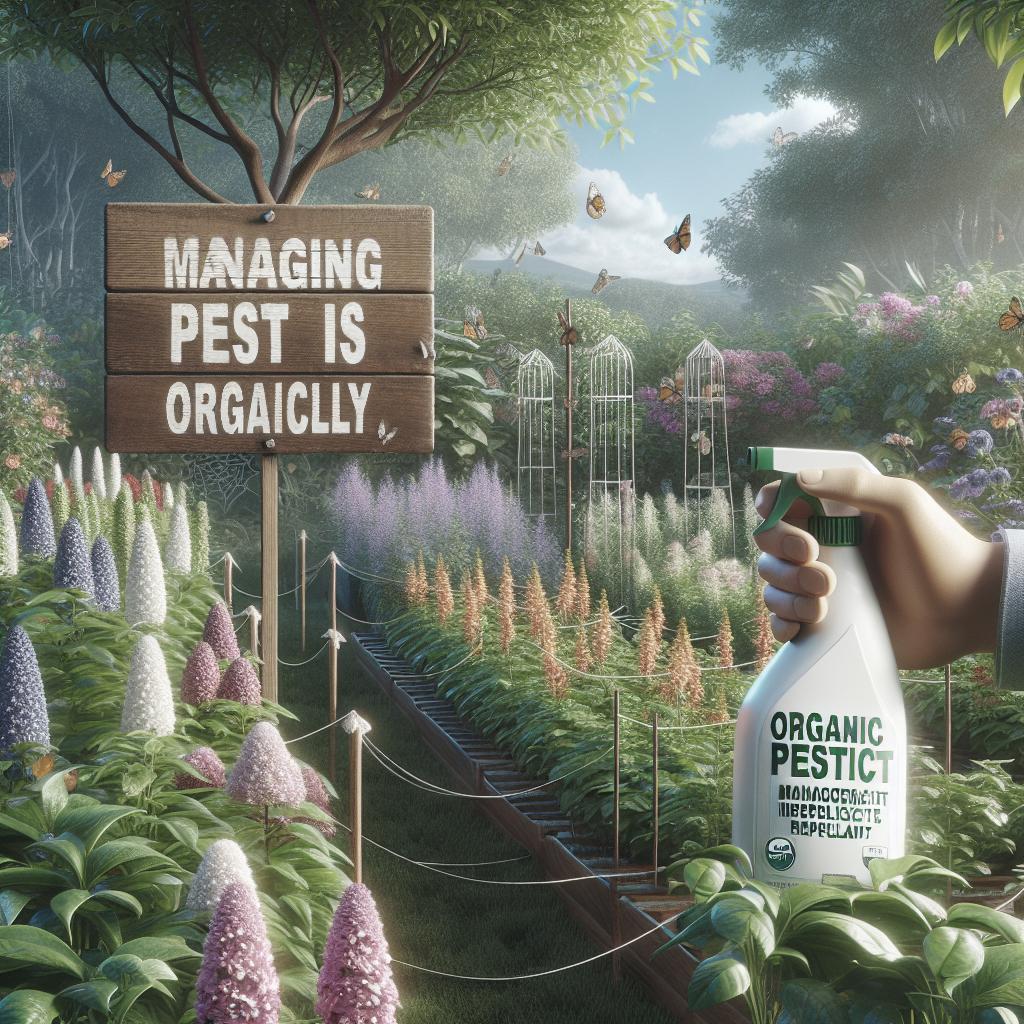Gardening is a rewarding hobby that brings you close to nature and provides fresh, home-grown produce. However, dealing with pests can be a significant challenge for any garden enthusiast. At Danny Woo, managing pests organically to ensure a healthy, thriving garden is paramount. This blog post will demonstrate how to manage pests without resorting to harmful chemicals using beneficial insects, backyard interventions, water treatments, manual removal, fall planning, and keeping garden equipment clean. These methods are not only environmentally friendly but also highly effective, requiring only simple and natural materials. Dive in to learn how to preserve the beauty and health of your garden effortlessly through these organic pest management techniques.
Beneficial Insects: Your First Defense Against Garden Pests
Nature has its own checks and balances system, and beneficial insects are an integral part of this equilibrium. Ladybugs, lacewings, and predatory beetles are among the most effective natural enemies you can introduce to fight off pests. For example, ladybugs are voracious consumers of aphids, while lacewings target caterpillars and beetle larvae. Encouraging these beneficial insects in your garden reduces the need for chemical interventions and promotes a healthier ecosystem. To attract these helpful allies, plant flowers that offer nectar and pollen. Marigolds, dill, and fennel are excellent choices that not only beautify your garden but also serve as a food source for beneficial insects. Additionally, maintaining a diverse landscape with a variety of plants helps create a habitat that attracts different types of beneficial insects, ensuring broad-spectrum pest control.
Backyard Garden Pest Intervention
When it comes to backyard gardens, intervention methods must be both effective and safe for the entire ecosystem. One popular intervention is the use of diatomaceous earth, a natural powder made from fossilized algae. Sprinkle this around your plants to deter slugs, beetles, and ants; the powder works by damaging the pests’ exoskeleton, leading to dehydration. Another highly effective intervention is companion planting. Certain plants, when grown together, can repel pests or attract beneficial insects. For instance, planting basil alongside tomatoes can help deter tomato hornworms. Similarly, marigolds emit a scent that repels many insect pests. These natural, symbiotic relationships can significantly reduce pest incidences in your garden.
A Hard Blast of Water
Sometimes, the simplest solutions are the most effective. A hard blast of water can knock off aphids, spider mites, and other small insects from your plants. Using a garden hose with a high-pressure nozzle, you can spray your plants to physically remove these pests. This method is not only effective but also safe for your plants and the environment. Be sure to focus on the undersides of leaves, where pests often congregate. Perform these water treatments early in the morning so that the plants have time to dry out during the day, minimizing the risk of fungal growth. Regularly using this technique can keep pest populations under control without the need for harmful chemicals.
Hand-Picking Pests
Hand-picking is an old but reliable method of dealing with garden pests. This involves manually removing pests like caterpillars, beetles, and slugs from your plants. While it may be time-consuming, this method offers the advantage of allowing you to inspect your plants closely, catching infestations early before they become more significant problems. You can use gloves or hand tools to pick pests off your plants. Dropping the pests into a container of soapy water will ensure they are unable to return to your garden. Regular inspections, especially during peak pest seasons, are crucial for this method to be effective. With practice, you’ll become adept at spotting and removing pests quickly and efficiently.
Plan Ahead in the Fall to Prevent Pests in the Spring
The key to effective pest management often lies in proactive planning. By preparing your garden in the fall, you can reduce the number of pests that survive into the spring. Cleaning up garden debris, such as fallen leaves and plant matter, removes places where pests can overwinter. Moreover, tilling the soil can expose and kill many pest larvae and eggs. Planting cover crops like clover or rye can help disrupt pest life cycles and improve soil health over winter. These cover crops not only add organic matter to the soil but also attract beneficial insects. Rotating crops in your garden beds can also prevent pest build-up by denying them a consistent host, making it harder for pest populations to establish.
Keep Your Supports and Trellises Clean
Maintaining clean supports and trellises is another essential aspect of organic pest management. Pests often hide in cracks and crevices of these structures, so cleaning them regularly can reduce pest harborage sites. Use a brush and mild soap to scrub the supports and trellises, removing any hidden pests or eggs. In addition to cleaning, consider using insecticidal soap or neem oil treatments on your supports and trellises. These natural products can deter pests without harming your plants. Regular maintenance of garden infrastructure not only keeps pests at bay but also prolongs the life and functionality of your garden supports. ### Final Thoughts Effective organic pest management in your garden at Danny Woo is all about foresight, integration, and regular maintenance. By combining methods such as introducing beneficial insects, using water sprays, hand-picking pests, fall planning, and keeping your garden structures clean, you can maintain a balanced, thriving garden environment. Here’s a summary of these strategies to help you keep on track with your pest management endeavors. “`html
| Method | Description |
|---|---|
| Beneficial Insects | Encourage ladybugs, lacewings, and predatory beetles to control pest populations. |
| Backyard Garden Intervention | Use diatomaceous earth and companion planting to deter and manage pests. |
| A Hard Blast of Water | Use a high-pressure garden hose to remove pests from plants. |
| Hand-Picking Pests | Manually remove pests like caterpillars and beetles from plants. |
| Plan Ahead in the Fall | Clean garden debris and plant cover crops to disrupt pest life cycles. |
| Clean Supports and Trellises | Regularly clean garden structures to remove hidden pests and their eggs. |
“`


